Succulents are now found everywhere from boutonnieres to hanging planters. It is a trend that is taking over not only gardens, but also wedding and home decorations. They grow in arid climates. Majority of succulent plants are native of Africa and Central America. They can withstand longer and less watering in the sun as they store water in their leaves.
Succulents are popular for their low maintenance and longevity, which makes them ideal for people who work all day, are on a trip or just are not the best at caring for plants. These plants are excellent for adding structure and liveliness to gardens and homes.
However, while these drought-resistant plants are easy to maintain, their choices are still there when it comes to location. In this guide, I will discuss a few succulent plants that help to enhance the beauty of your home and garden as well.
Best Succulent Plants
1. Burro’s Tail
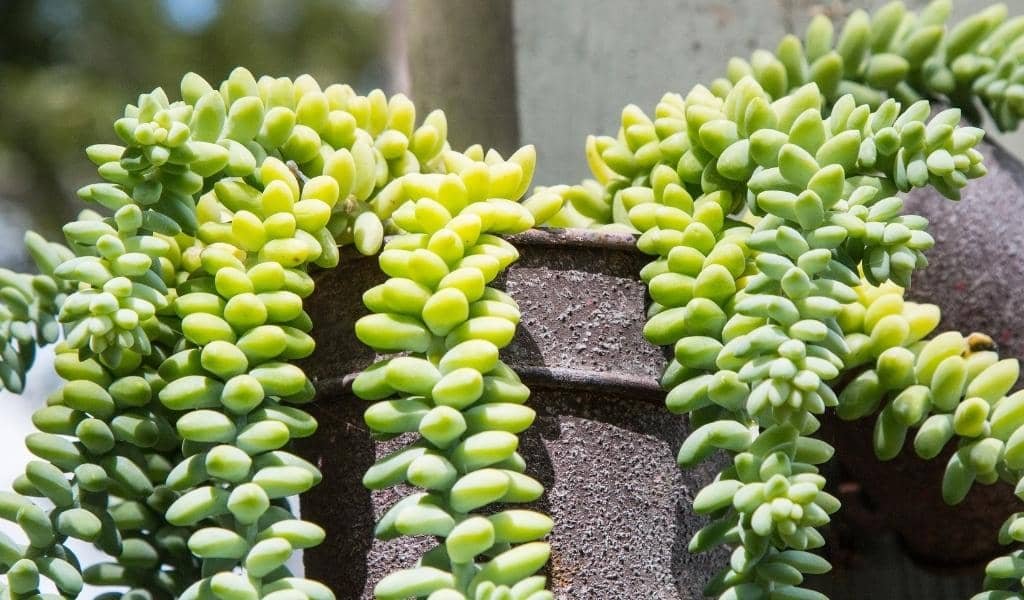
Scientific name: Sedum morganianum
Another name of this plant is donkey tail plant, it is one the easiest plants to grow and care for, making it popular plant. Interestingly, the burrowing tail was named because of its ability to grow up to four inches long with a tail-like shape. This succulent grow best inside the house, it is placed in a well-watered container, where its long stems can descend from the edges of the pot.
Height: 30 cm to 120 cm
Sun exposure: Full, partial
Soil Type: Loamy, Sandy
Soil pH: Neutral, alkaline
Native area: Southern Mexico
2. Crown of Thorns
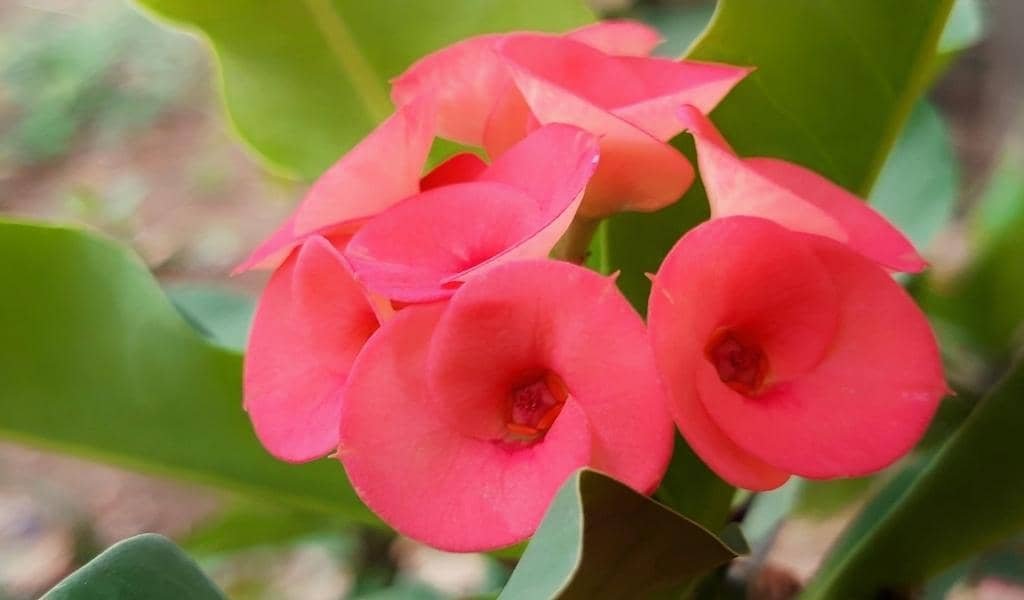
Scientific name: euphorbia milii
The crown of thorns is an excellent houseplant as it adapts well to the indoor environment and room temperature. For best maintenance and results, locate this juicer by the window where it can receive around three to four hours sunlight per day. It is very little when water is released, but be sure to water the plant only when its soil is completely dry.
Height: 3 to 6 feet
Sun exposure: Full, partial
Soil type: well-drained
Soil pH: Neutral to acidic
Native area: Madagascar
3. Flaming Katy
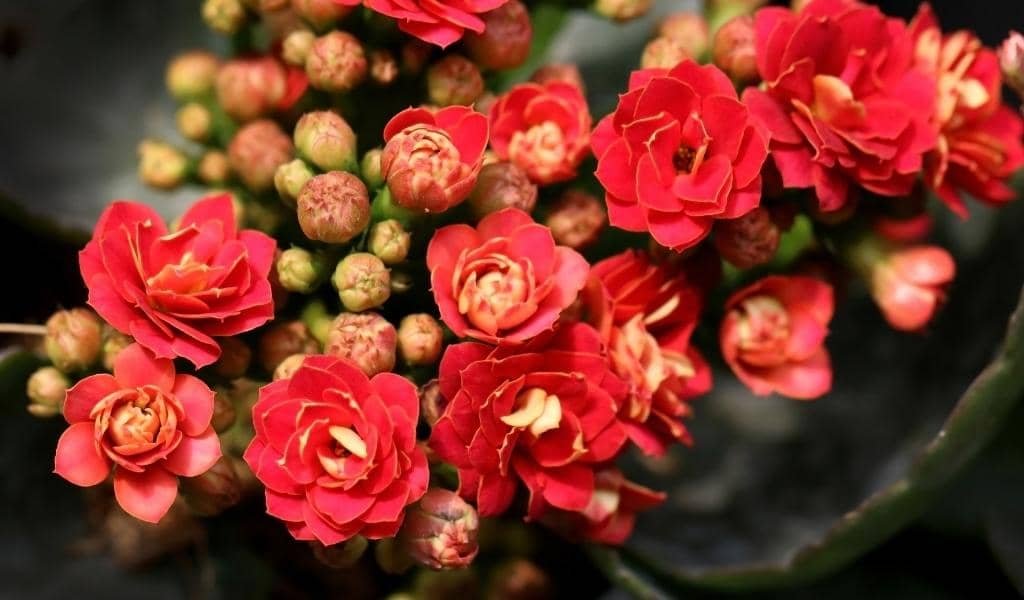
Scientific name: kalanchoe blossfeldiana
They require temperature of 60 to 85 degrees, and are extremely sensitive cold, so it is best suited for indoors. Besides this, they grow best in earthenware pots with hole at the bottom for drainage. They need well-lit area and will produce more buds and flowers when exposed to the sun for 8 to 10 hours a day. In late autumn and early winter it produces buds with for juicy petals that can range in color from dark red to golden and white.
Height: around 12 inches
Sun exposure: Full
Soil Type: Loam, Sandy
Soil pH: Acid, alkaline, neutral
Native area: Madagascar
4. Jade Plant

Scientific name: Crassula Ovata
These succulent plants contain thick, glossy, dark green leaves that grow oval in shape. Few verities of jade plant develop red color on the top of the leaf. Once the plant matures and the conditions are appropriate, the jade plant can develop attractive white or pink flowers that thrive in the star shape.
Height: 3 to 8 feet
Sun exposure: Full
Soil Type: Sandy
Soil pH: Acidic
Native area: South Africa
5. Aloe Vera
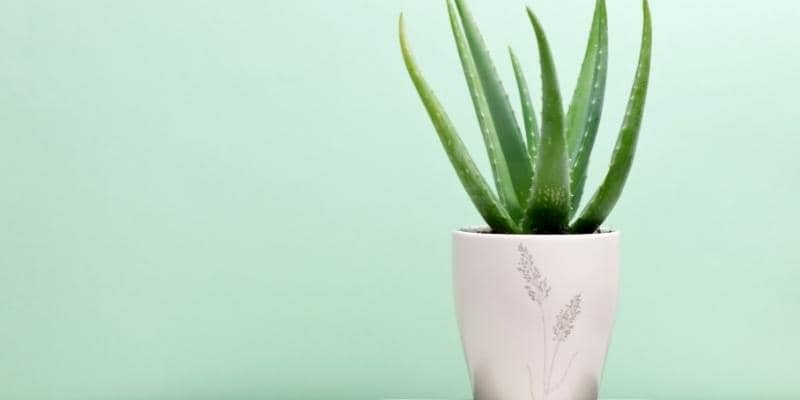
Scientific name: Aloe Vera
Aloe Vera is a variety of houseplant that is best known for its medicinal uses. It is grown in tropical climates for its medicinal purposes. It is one of the healthy compounds that are useful in making scraps and creams. These can be found in juicy burn, skin lotions, cosmetics, and so on. It can also be used as an indoor plant for ornamental purposes. It contains thick, pointed leaves that are generally in greenish-gray color. The leaves are varied with white spots that extend directly from the base of the plant.
Height: 2 feet
Sun exposure: Full
Soil type: Succulent mix
Soil pH: Slightly acidic
Native area: Africa, Madagascar
6. Panda Plant
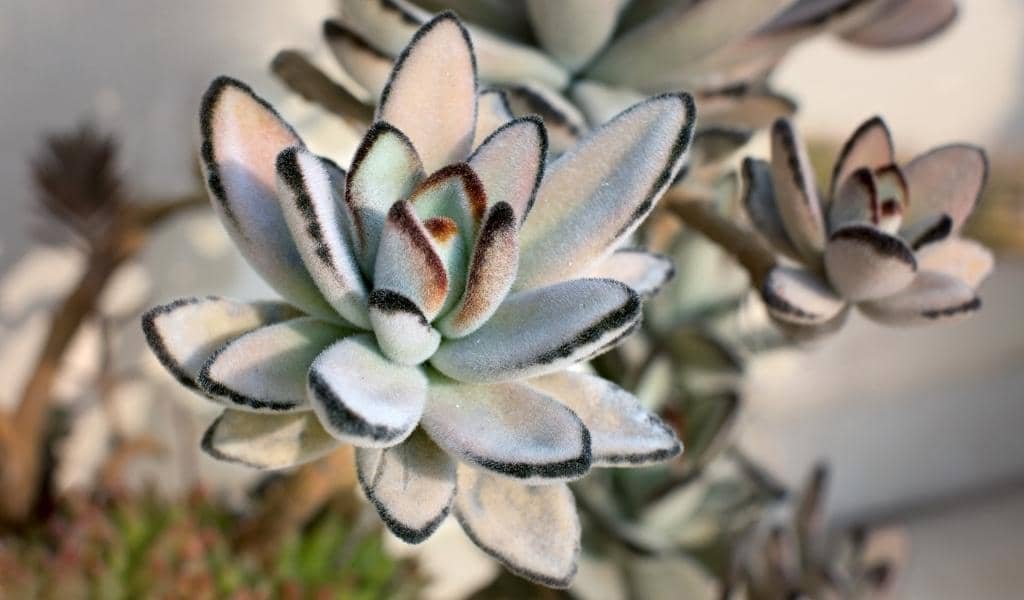
Scientific name: kalanchoe tomentosa
It is one of the most amazing indoor succulent plants due to its small and fuzzy leaves. They can live indoor for many years and although this type of sap can bloom under the appropriate circumstances, it is rare. Due to the tiny size and soft texture of the panda plant, it looks ideal in a kid’s room or in hanging baskets.
Height: around 2 feet tall
Sun exposure: Full
Soil type: well-drained
Soil pH: Slightly acidic
Native area: Madagascar
7. Pincushion Cactus
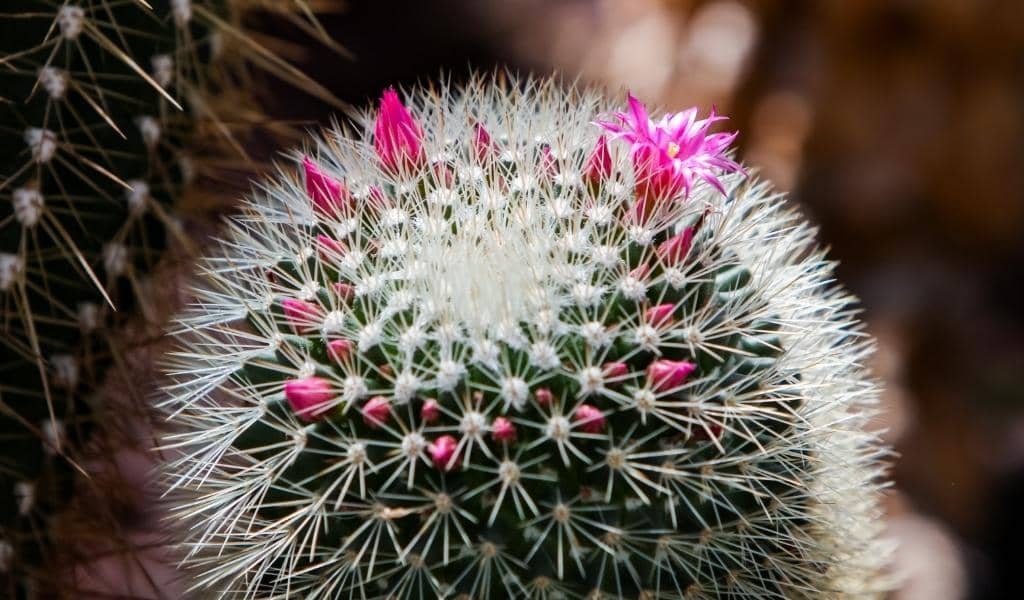
Scientific name: mammillaria crinita
It is a variety of cactus and has pointy spikes covering its outer part. Pincushion is a miniature cactus that usually does not grow more than six inches tall and produces vibrant blooms that add a shade of desert to your home.
Height: 6 inches
Sun exposure: Full
Soil type: well-draining
Soil pH: acidic
Native area: Mexico
8. Roseum
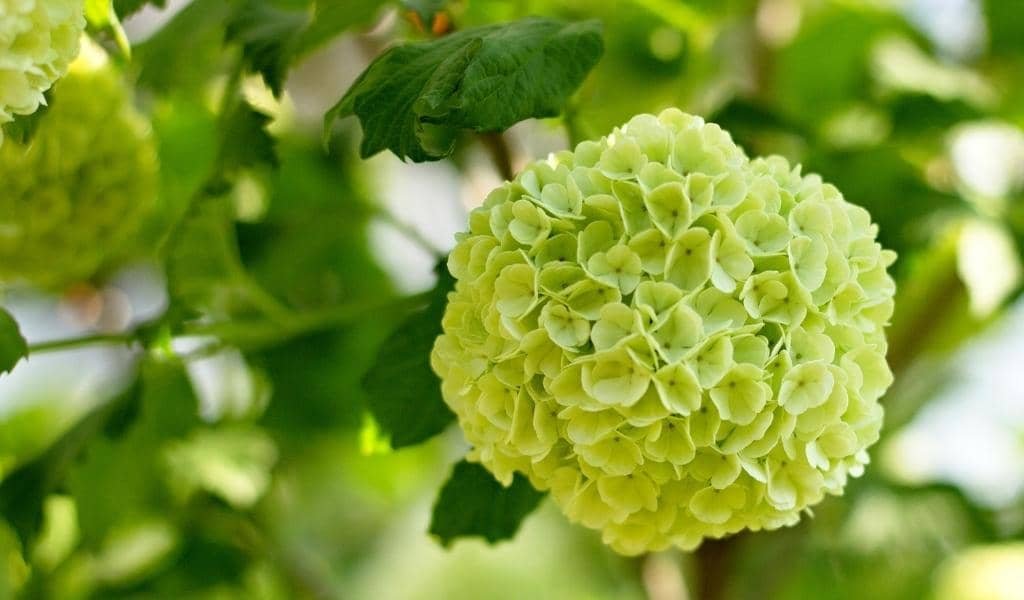
Scientific name: sedum spurium
Roseum plants are a low-growing plant that is only four to six inches tall. They work well in containers or planters on a windowsill. During the summer, rosium develops light-pink star flower bouquets that can add a pop of color to your home decoration. This succulent requires full sun over partial shade, so we suggest putting it on a window sill that receives the right amount of light.
Height: 4 to 6 inches
Sun exposure: Full
Soil type: sandy, loamy
Soil pH: Acidic
Native area: Eastern U.S.
9. Snake Plant

Scientific name: sansevieria trifasciata
It can be ignored for a long time and yet retain its fresh look. The plant has long, variegated leaves in various shades of green. I can tolerate low room light and less water as well. According to NASA research, this plant helps to improve the air quality surrounding you by absorbing toxic pollutants when you sleep.
Height: 1 to 3 feet.
Sun exposure: bright, indirect sunlight
Soil type: light loam
Soil pH: acidic to neutral
Native area: Africa
10. Zebra Plant

Scientific name: haworthia fasciata
The Zebra plant is one of the low-maintenance indoor succulent plants that do not require too much space to grow in a room. These striking leaves point in different directions from their stem. It gives bright yellow, conical flower heads that last for about a week. They have a gentle, slow-growing, and eccentric appearance. They make the perfect gift and décor for the shelf or desk.
Height: 2 to 6 feet
Sun exposure: indirect, partial
Soil type: Moist
Soil pH: Neutral to acidic
Native area: Brazil
11. Stonecrop

Scientific name: sedum spp.
There are two main types of sedum. For example, tall sedum and creeping sedum. The tall sedum has long stems that grow from one to three feet. They are known for their beautiful, colorful bouquets in the summer garden. Creeping sedum grows along the ground and is commonly used in rock gardens, rock walls, or roofs.
Height: 16 to 18 inches
Sun exposure: Full
Soil type: Sandy
Soil pH: acidic, neutral
Native area: Eastern United States
12. Plush Plant
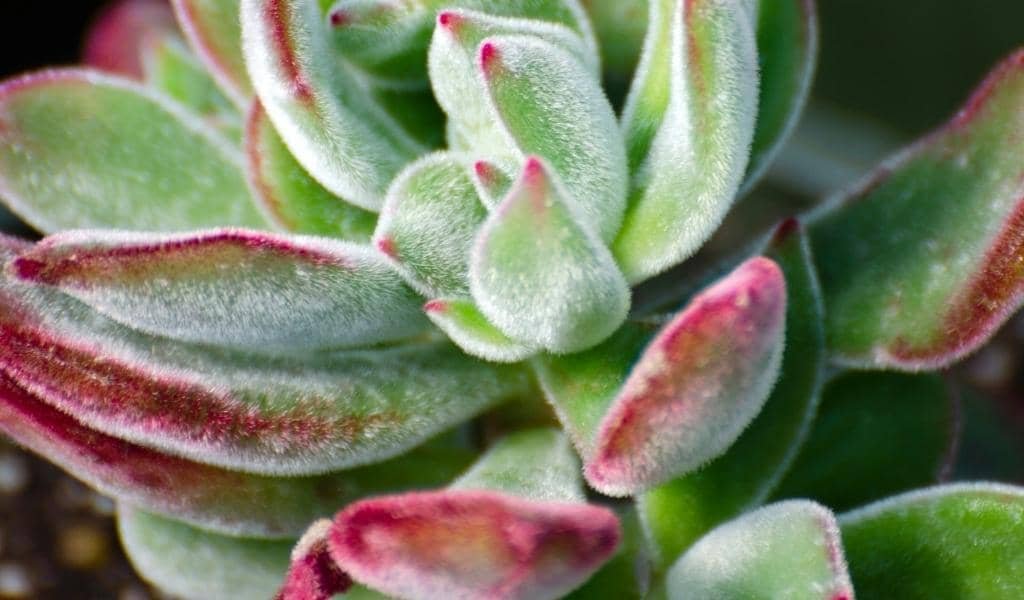
Scientific name: echeveria pulvinata
The Plush plant is covered with beautiful white hair that shines in the sun, giving it a silvery look. They prefer partial shade and can be grown in the ground or in garden containers. For best results, it is vital that plush plants be reported during the warm weather. Before planting, ensure that the soil is totally dried.
Height: around 12 inches
Sun exposure: Full
Soil type: well-drained
Soil pH: Slightly acidic
Native area: Mexico
13. Dudleya
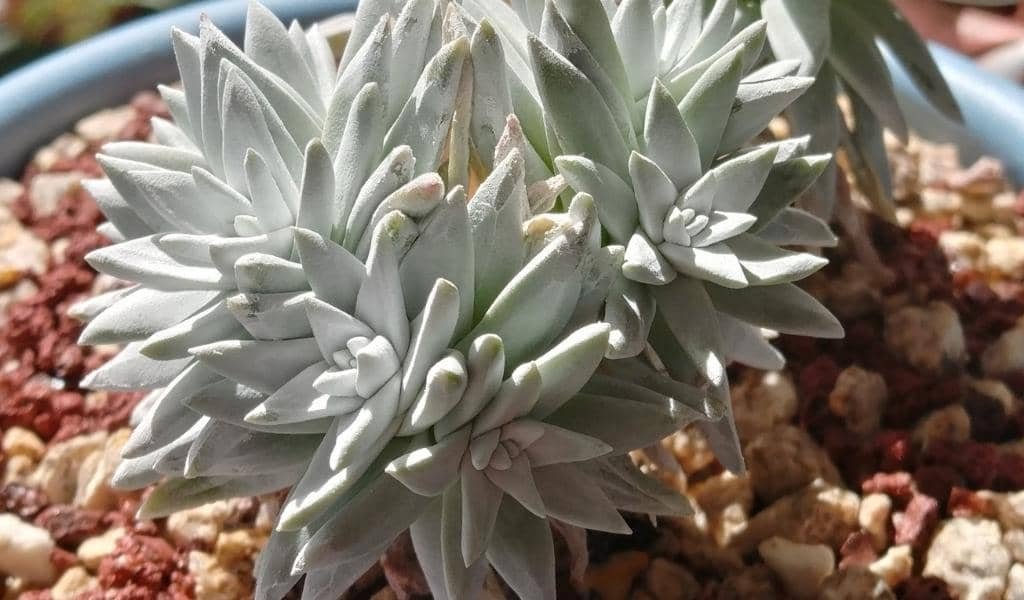
Scientific name: echeveria spp.
They are rosette-forming plants, which mean they have a rounded arrangement of leaves. Most leaves have rounded edges that can live up to 100 years with good care. These plants grow naturally on hills to prevent water from flowing on their leaves, so be sure to avoid their leaves when drinking water.
Height: 24 inches
Sun exposure: full, partial
Soil type: well-drained
Soil pH: acidic, neutral, alkaline
Native area: California
Top Benefits of Succulent Plants
Here, you will find six amazing benefits of growing succulent plants in your home.
1. Brighten up your home in any climates
Succulent plants make amazing houseplants due to their hardiness and ability to grow in different climates. In nature, you can see these plants growing in virtually any climate: from coastal cliffs and moist forests to dry deserts of bone and cold mountains. In an indoor space, they bloom in the atmosphere at room temperature.
2. Purify air
As per NASA research, plants clean the air and water in the indoor environment. Juicy turns these contaminants into plant foods to purify the air in your home. They absorb toxic pollutants from the air, which have harmful effects on human health.
3. Improve the humidity of your home
They can increase the level of humidity in your home as they release water. Increasing humidity can improve health conditions like sore throats, coughs, colds, and so on.
4. Add fresh oxygen to your environment
Some plants produce oxygen during the day and night as well. So, it helps to improve respiratory health. It is a good idea to keep your plant in your bedroom to help you feel refreshed at night and sleep better.
5. Improve your focus
Nowadays, many adults and children also have less serious problems with attention. If you keep houseplants in your home, then they can help to improve your memory power and also enhance your work ability.
It may seem absurd to suggest that the mere presence of plants can alleviate your pain, but the research from the University of Kansas found that when patients had plants in their hospital rooms, they seemed to need fewer pain medications.
Finally, there are several succulent plants that have plenty of benefits. Above, I mentioned all the popular succulent plants that you can grow in your home to get several advantages.
Hope, you liked reading the guide. If you think we have missed something or have any suggestion, please drop your valuable opinion in the comment section below.
If you are searching fresh and live houseplants online then checkout our extensive collection of amazing indoor and outdoor houseplants.

